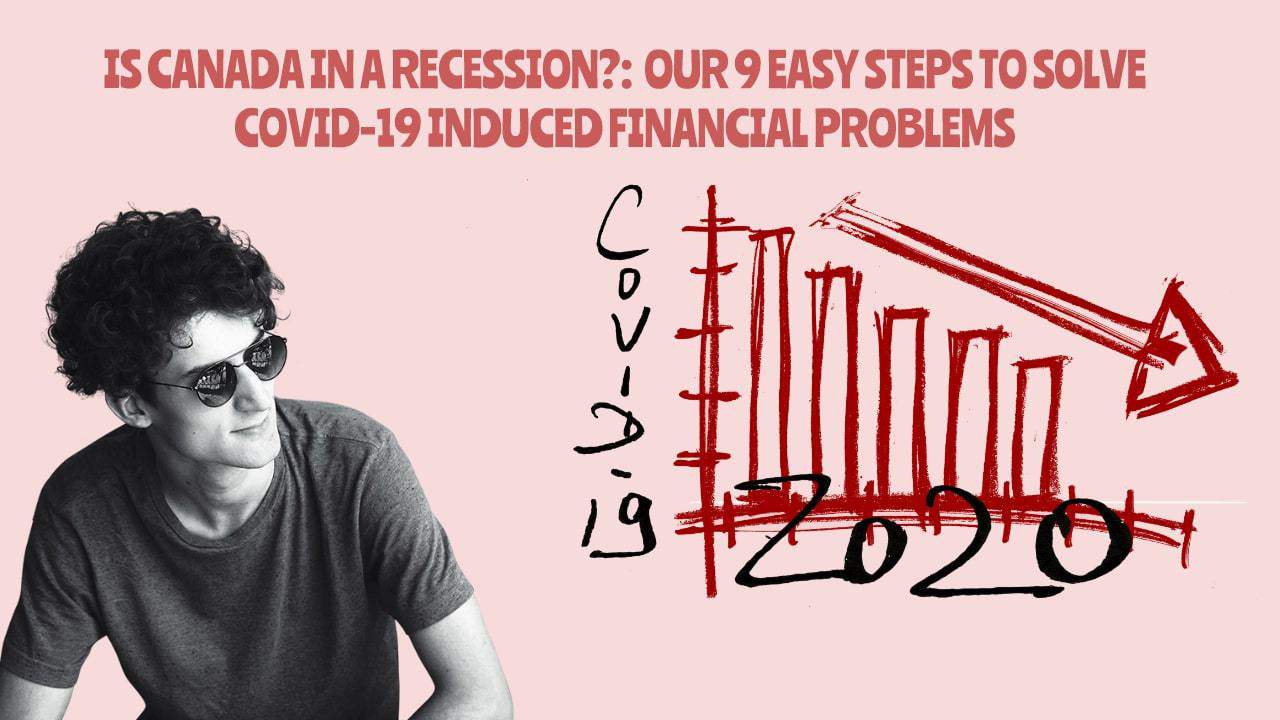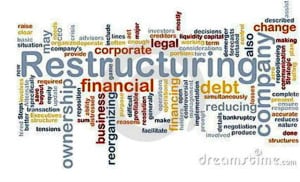Canadian banks: Introduction
Canadian banks are recognized globally for their exceptional standards, which are maintained through proactive measures to safeguard as best as possible, the financial well-being of their clients. When we think of the Canadian Big 6 Banks, we do not normally think about how their methodologies are meant to reduce consumer insolvencies and business shutdowns. We only think about how the banks make demands on their customers and at times, shut down Canadian businesses and sue Canadian consumers.
A dynamic economic landscape demands that lenders adapt to the ever-changing scenario. Canadian banks have risen to the challenge by implementing comprehensive risk assessments, tailored financial solutions, and proactive measures to minimize dangers to their clients and bankruptcy cases. This is even the case for clients who are only depositors and brokerage clients.
Canadian financial institutions have emerged as a vital player in providing stability to individuals and businesses, to give their customers the tools for hopefully a secure financial future.
This Brandon’s Blog delves deeper into the strategies and practices employed by and the pressure on Canadian banks to prioritize the financial health of their clients, resulting in a reduction in bankruptcy cases.
Canadian banks know the importance of minimizing bankruptcy
Decreasing the number of individuals and businesses filing for bankruptcy holds an important place in sustaining a stable Canadian economy. Canadian financial institutions have recognized the value of preemptively recognizing prospective hazards and collaborating with their customers to try to avoid bigger financial problems.
With the use of bespoke financial solutions, careful evaluation of risks and patterns, active engagement with borrowers, promoting financial literacy, and use of the latest technologies, Canadian banks take full advantage of the opportunities for the seamless continuation of their clients’ personal and business finances.
Furthermore, Canadian banks have actually prioritized responsible lending and borrowing techniques, adhering to government regulations and proper moral standards. This has so far led to the impressive success of Canadian banks in reducing personal bankruptcy and corporate bankruptcy filings when many expected them to explode as a result of the COVID-19 pandemic.
Overview of financial institutions’ efforts to minimize bankruptcy
Financial institutions in Canada have a vested stake in aiding borrowers during periods of financial difficulty, as bankruptcy can have negative consequences for both parties involved. This article briefly touches on this aspect, but this blog will delve deeper into how lenders actively contribute to minimizing bankruptcies. We will explore initiatives such as financial education, early intervention programs, and customized repayment plans that assist borrowers in managing their debts more effectively.
Canadian lenders are taking proactive steps to reduce bankruptcy cases in the country. Through a constantly updated and dynamic risk assessment process, lenders can identify potential financial vulnerabilities and provide tailored solutions to clients. Small business owners, particularly those most exposed to financial risks, have also benefited from the lenders’ focus on financial literacy programs.
By fostering collaborative relationships with borrowers, lenders have effectively instilled responsible lending practices that have proven crucial in strengthening the Canadian financial system against potential shocks. Achieving these results can be attributed, in part, to the integration of technological advancements that have revolutionized the lending landscape. This enables lenders to promptly provide borrowers with essential information and timely notifications.
The alignment of lending practices with government regulations has played a vital role in fostering stability within the financial sector and enhancing the resilience of the Canadian economy. Through the prioritization of responsible lending and borrowing practices, Canadian lenders have made significant progress in mitigating bankruptcies and promoting the enduring financial well-being of their clients.
Canadian banks embrace technology and understand the value of risk assessment
The major Canadian banks have wholeheartedly adopted cutting-edge technological innovations to augment their offerings and mitigate the possibility of insolvency. By leveraging automated underwriting procedures, digital documentation authentication, and online account management platforms, lenders are simplifying operations and empowering borrowers to adeptly oversee their finances.
Among the fundamental pillars of the major Canadian bank’s success in minimizing bankruptcies is its focus on aggressive risk evaluation. Lenders understand that determining the possible financial challenges of their customers early is critical for catching financial problems before they result in bankruptcy scenarios. By utilizing sophisticated risk assessment tools and also leveraging extensive information analytics, Canadian banks can evaluate the creditworthiness of their consumer and business customers properly.
Advantages of Enhanced Credit Application Processes
Canadian financial institutions have implemented significant measures to decrease instances of insolvency and contribute to the financial well-being of both individuals and businesses. Their emphasis on thorough risk assessment, tailored financial solutions, and proactive methodologies has positioned them as key contributors to enhancing the prospects of their customers’ financial welfare.
Their approaches involve fostering collaboration with clients, leveraging technology, and upholding responsible lending practices. Furthermore, lenders have placed a strong emphasis on promoting financial literacy and adhering to government regulations to ensure customers have access to credit while minimizing the risk of default. Through the optimization of the credit application procedure, Canadian financial institutions can mitigate the likelihood of small Canadian businesses and individuals facing bankruptcy, thereby fostering increased stability within the financial landscape.
Tailored Financial Solutions for People
Canadian banks acknowledge the unique financial circumstances and requirements of each person. As a result, they have actually transitioned from employing a standard approach to providing tailored monetary solutions. By adapting lending frameworks, rates of interest, as well as repayment terms to refer to the needs of borrowers, lenders can dramatically lessen the possibility of insolvency and default.
Extensive Assistance for Small Enterprises
Small enterprises play a pivotal function in the Canadian economy, and guaranteeing their development and stability is very important. Canadian banks recognize this fact and supply varied assistance to small businesses. This includes flexible financing choices, rendering financial advisory services, as well as helping with access to resources that help companies in their financial management.
Collaborative Approach with Borrowers
Instead of taking on an adversarial stance, Canadian banks have welcomed a joint strategy in managing borrowers dealing with financial problems. They understand that things can change, as well as unforeseen problems can arise. Lenders now work very closely with customers to discover different remedies, such as adjusting financing terms, debt consolidation, or financial restructuring, to help them get back to financial stability and hopefully stay clear of bankruptcy.
The role of Canadian banks in offering longer repayment terms
Canadian banks have taken on a crucial role in the financial landscape by offering longer repayment terms to borrowers. The benefits can be summarized as follows:
Meeting the evolving needs of borrowers:
With changing economic conditions as well as developing consumer preferences, Canadian banks have acknowledged the relevance of supplying versatile payment choices. By supplying longer repayment terms, banks can suit the different scenarios and challenges faced by consumers. This strategy enables debtors to handle their cash flow more effectively and also lowers the economic burden connected with shorter repayment terms.
Enhanced affordability and reduced monthly payments:
Prolonged repayment periods have a positive impact on the affordability of Canadian borrowers. By extending the duration of loan repayments, financial institutions in Canada can significantly lower the number of monthly payments, thus facilitating the fulfillment of financial obligations for both individual customers and commercial entities. This strategy particularly benefits borrowers who encounter unexpected financial crises, provided they have leveraged the extended repayment terms to generate a financial safety net.
One of the ways Canadian banks have been helping people cope with their mortgage debt and mortgage payments is by providing longer repayment terms. Extended repayment terms, such as the 30-year amortization periods offered by some financial institutions, can improve the affordability of housing for buyers providing them with the necessary funds to pay for other household expenses. A shorter amortization period would result in a higher monthly mortgage payment taking cash away from other necessities.
Improved access to credit:
Improved access to credit for a broader spectrum of borrowers has been enhanced by the introduction of lengthier repayment terms. By accommodating extended periods for repayment, Canadian banks are able to extend credit to individuals and businesses who may have previously been excluded or encountered challenges in obtaining loans with shorter terms. This inclusivity promotes financial stability, fosters economic growth, and encourages the pursuit of entrepreneurial ventures.
Stimulating economic growth:
The role of Canadian banks in offering longer repayment terms goes beyond assisting borrowers; it also plays a vital role in stimulating economic growth. By facilitating access to credit, these extended terms encourage borrowing for investment, expansion, and innovation. This, in turn, promotes business development, job creation, and overall economic prosperity.
Mitigating default risks:
While longer repayment terms may raise concerns about increased default risks, Canadian banks have implemented robust risk assessment and mitigation strategies. By carefully evaluating borrowers’ financial positions, credit history, and repayment capacity, banks can mitigate the potential risks associated with longer loan durations. This cautious approach ensures that extended repayment terms do not compromise the stability and resilience of the banking sector.
The connection between repayment terms and affordability
The provision of longer repayment terms by Canadian banks reflects a proactive response to changing market dynamics and borrower needs. By offering flexibility, affordability, and improved access to credit, banks are empowering individuals and businesses to achieve their financial goals. Additionally, the stimulatory effect on economic growth further solidifies the pivotal role played by Canadian banks in the nation’s financial landscape.
As the financial landscape continues to evolve, it is expected that the provision of longer repayment terms will remain a crucial aspect of the banking sector’s commitment to supporting the financial well-being of Canadians. But like with everything, there is a potential downside to weigh against all of the benefits, especially in the housing market.
While extended repayment terms may appear to make housing more affordable by reducing monthly mortgage payments, it’s crucial to consider the long-term financial implications. Lower monthly payments can entice buyers to enter the market, but they also extend the overall period for which individuals are indebted. This raises concerns about increased debt burdens and potential economic risks.
It is also important to examine this factor within the broader context of the Canadian housing market. Greater affordability may cause some Canadian consumers to stretch even more on higher-priced real estate, thereby eliminating the benefits of longer amortization.
Importance of financial education to Canadian banks
Canadian banks have shown in recent years that they recognize the significance of financial education amongst Canadians. Lenders are carefully concentrating on boosting financial literacy, passing on understanding about sensible lending, effective money-saving strategies, and making educated choices.
Joint initiatives between lenders and borrowers are crucial, as they strive to create customized methods that promote sustaining financial wellness. To make certain that they are being accountable in their lending practices, Canadian banks are skillfully technology for risk assessment and credit approval and adhering to the regulations of the federal government. These proactive steps have generated successful results, and reduced business and consumer insolvencies.
Federal government regulations and banking industry standards for Canadian banks
In the ever-evolving realm of the Canadian banking landscape, the welfare and interests of individuals are upheld through the robust framework of government regulations and industry standards. These pivotal guidelines and norms are meticulously crafted to ensure equitable treatment, unfettered access to transparent information, and effective channels for dispute resolution. The Canadian banking sector takes diverse measures to shield consumers and cultivate unwavering confidence in the financial fabric.
Responsible lending practices in the financial sector constitute a bedrock element of consumer protection. Financial institutions are entrusted with the task of diligently appraising the creditworthiness of borrowers and offering loans that align harmoniously with their financial capacities. This prudential approach safeguards Canadian consumers and business borrowers from being ensnared in the web of excessive debt and confronting arduous financial predicaments. Through the adoption of responsible lending practices, the banking industry endeavours to strike a delicate balance between extending credit and mitigating the perils of consumer insolvencies.
The imperative of disclosure requirements cannot be overstated in the realm of consumer protection. Financial entities bear the onus of furnishing consumers with lucid and comprehensive information pertaining to the intricacies, stipulations, and expenses associated with financial products and services. This empowers consumers with the discernment necessary to make judicious choices and shield themselves from concealed surprises or misleading practices.
In instances where disputes arise between consumers and the banking industry, a robust framework of consumer dispute resolution mechanisms comes into play. These mechanisms furnish an impartial and equitable platform for the resolution of conflicts, ensuring that consumers possess a powerful voice in addressing their grievances. Spearheading the supervision and enforcement of consumer protection regulations within the banking sector is the Financial Consumer Agency of Canada (FCAC). The FCAC diligently strives to enlighten consumers about their rights, diligently probes complaints, and aptly initiates remedial action against non-compliant institutions.
Through the implementation of these cogent consumer protection measures, the Canadian financial domain endeavours to cultivate trust, transparency, and unwavering accountability. These regulations not only serve as a bulwark for consumers but also bestow profound benefits upon the stability and integrity of the financial edifice at large.
Canadian banks: Conclusion
To conclude, Canadian banks continue to blaze a trail in promoting economic stability as well as safety for people and businesses. With their commitment to risk analysis, customized financial services, as well as proactive monitoring, lending institutions are making sure that clients have the ability to handle their financial obligations effectively.
The Canadian banking industry are enabling Canadians to improve their financial standing as well as ideally stay clear of all the negative consequences of bankruptcy. In these unique times, it is reassuring to recognize that Canadian banks are taking their responsibilities seriously as well as embracing a pre-emptive approach to address threats all to help Canadians to be more financially successful.
I hope you enjoyed this Canadian banks Brandon’s Blog.
Revenue and cash flow shortages are critical issues facing people, entrepreneurs and their companies and businesses. Are you now worried about just how you or your business are going to survive? Are you worried about what your fiduciary obligations are and not sure if the decisions you are about to make are the correct ones to avoid personal liability? Those concerns are obviously on your mind. Coming out of the pandemic, we are also now worried about the economic effects of inflation and a potential recession.
The Ira Smith Team understands these concerns. More significantly, we know the requirements of the business owner or the individual that has way too much financial debt. You are trying to manage these difficult financial problems and you are understandably anxious.
It is not your fault you can’t fix this problem on your own. The pandemic has thrown everyone a curveball. We have not been trained to deal with this. You have only been taught the old ways. The old ways do not work anymore. The Ira Smith Team makes use of new contemporary ways to get you out of your debt problems while avoiding bankruptcy proceedings. We can get you debt relief now.
We have helped many entrepreneurs and their insolvent companies who thought that consulting with a trustee and receiver meant their company would go bankrupt. On the contrary. We helped turn their companies around through financial restructuring.
We look at your whole circumstance and design a strategy that is as distinct as you are. We take the load off of your shoulders as part of the debt settlement strategy we will draft just for you.
The Ira Smith Trustee & Receiver Inc. team understands that people facing money problems require a lifeline. That is why we can establish a restructuring procedure for you and end the discomfort you feel.
Call us now for a no-cost consultation. We will listen to the unique issues facing you and provide you with practical and actionable ideas you can implement right away to end the pain points in your life, Starting Over, Starting Now.








 CREDIT SCORES ONTARIO
CREDIT SCORES ONTARIO


